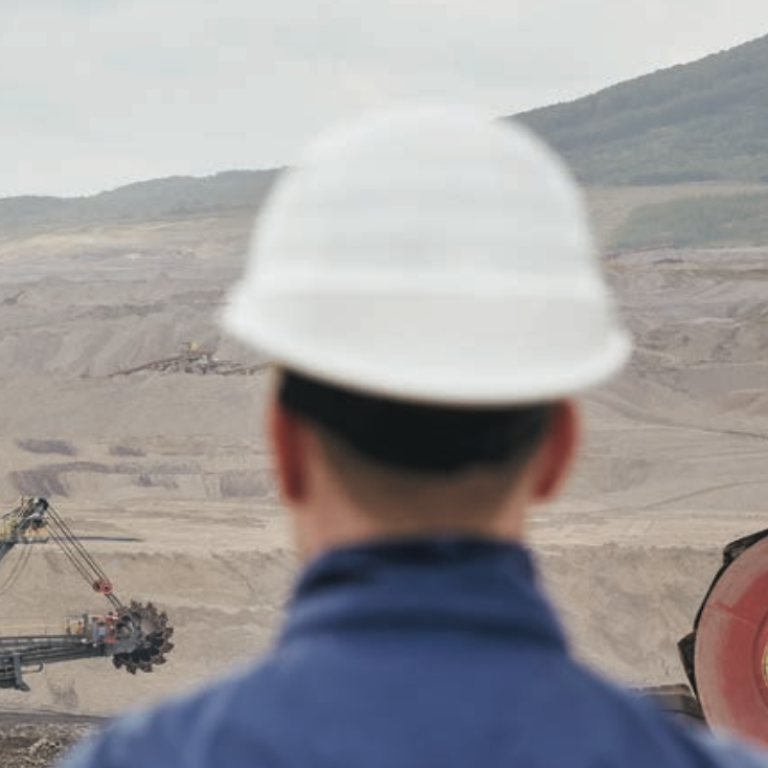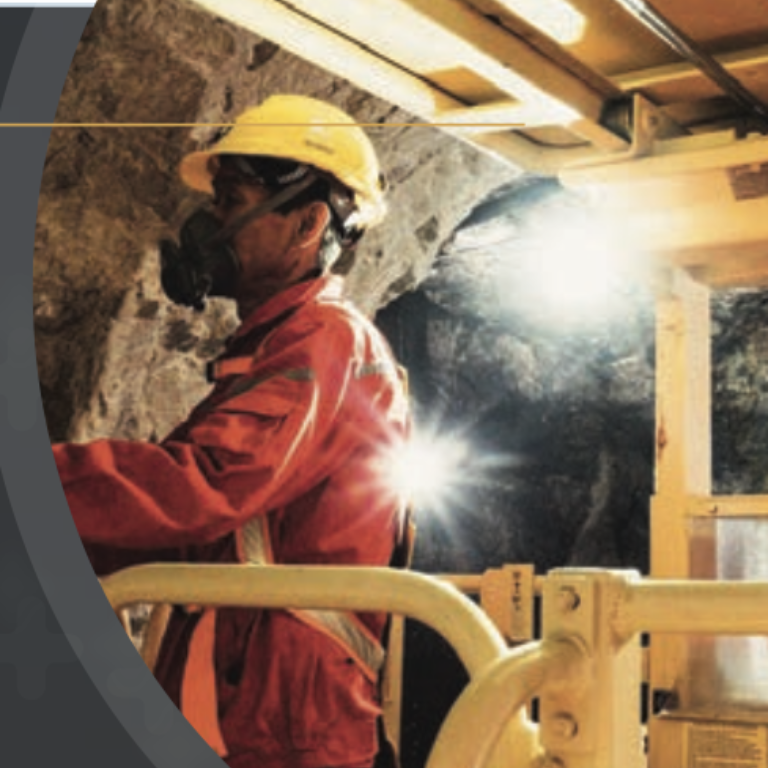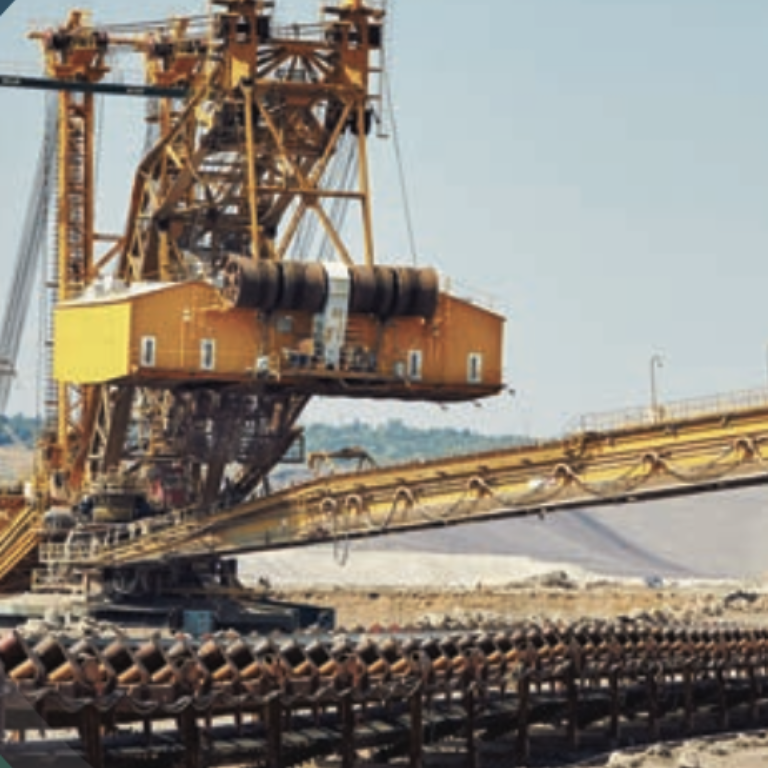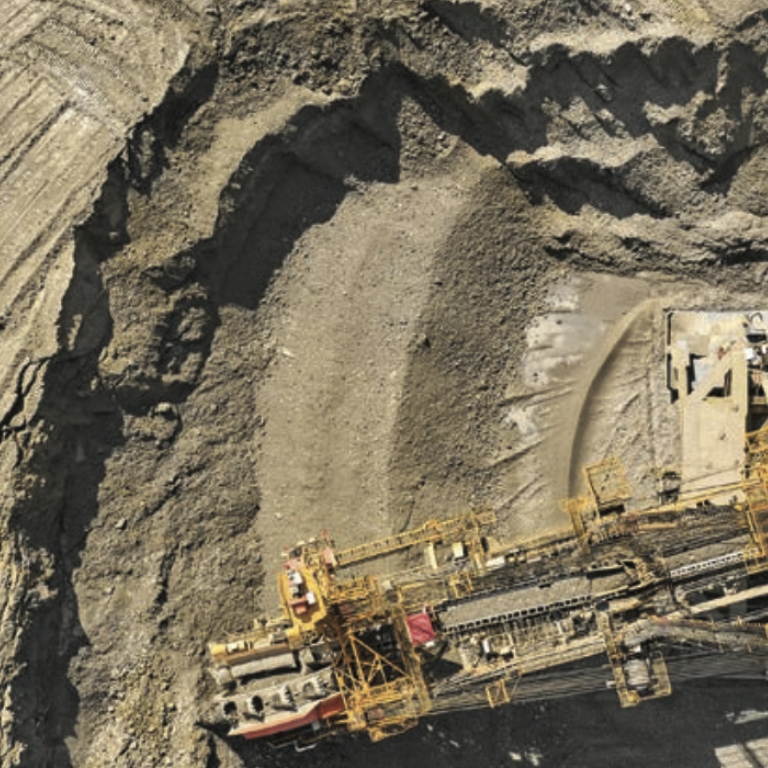5G Transformation Hub
Dual-frequency 5G networks for smarter coal mining
China Mobile
In July 2021, Dahaize Coal Mine completed deployment of a private 700MHz + 2.6GHz integrated 5G network to support intelligent capabilities in its mining systems, coal selection plant, auxiliary production systems, and platform construction systems. In doing so the company became the first in its industry to use VoNR high- definition video devices to enable smart coal mining.
Select a project
Contents
Challenge
Safe production is a top priority in coal mining, but the barriers to this are numerous – stemming from factors such as high concentration of gases, ashes and dusts, flooding and seepage hazards in underground mines, long working hours and heavy workloads. High-resolution video-driven smart mining is the route to safer practices, but Wi-Fi and 4G networks are incapable of supporting this
Solution
An innovative 5G 700MHz + 2.6GHz integrated network was deployed to realise full 5G coverage in the Dahaize coal mine, both above and below ground. Among the advanced solutions enabled at Dahaize were a 5G robot system cluster for inspections, an AI-based underground video analysis system, unmanned driving, smart wearables, intelligent tunnelling, and a virtual interaction application.
Impact & Statistics
The project has a construction capacity of 15 million tons per year with a service life of 157.7 years, and total investment is estimated at RMB 12,979 million. Latency has been lowered by 35%, performance stability improved by 45% over conventional 5G single frequency networks, and 5G construction costs have also been reduced by more than 40%. Production costs have been reduced by RMB 12 per ton, and labour costs by RMB 20 million per year.
Wider Implications
Application of 5G in China’s coal sector has been plagued by issues such as low coverage by conventional frequency bands and high costs – the success of the Dahaize project however demonstrates to the wider industry that 5G connectivity can be effective and cost-efficient in enhancing both production and safety in the country’s coal mining sector.
Stakeholders
Dahaize Coal Mine, China Mobile, China Coal Group Shaanxi Company, China Coal Technology Engineering Group Mine Intellectualisation Co., Ltd., China Broadcasting Network Group, and China Coal Information Technology (Beijing) Co., Ltd., ZTE Corporation
02
How did 5G help Dahaize achieve its goals?
A new integration mode, an innovative base station with built-in safe features, and a new cloud-network architecture were used to promote the smart development of Dahaize Coal Mine – and transform the tough, tiring, dirty working conditions which are the norm in the coal mining industry. Working face visualisation is a key condition to realise intelligent mine operations, but traditional networks are unable to support the high-definition video streaming needed. They also cannot achieve business segregation, making it impossible to meet differentiated business requirements on video, controls, and communication.
Current 5G private networks however are typically of a single frequency, creating barriers to large-scale applications in mining – including higher construction costs and difficulty in realising 5G full coverage in complex scenarios, such as mining faces, turning, uphill/downhill, undulation and blind sides. Data from underground industrial control ring network, video surveillance ring network, and safety monitoring ring network are independent from each other, which requires centralised bearing to enhance stability and operation and maintenance efficiency; and lowering MEC capacities alone cannot address the conflicts between overall digital transformation and fragmented requirements, which requires deep integration of 5G and key coal businesses driven by the new type of cloud-network architecture.
The 5G cloud-network integration platform at Dahaize, and the combined use of 700MHz & 2.6GHz frequency bands, enabled development of an intelligent application system cluster. The 700MHz base station (underground RRU) only accesses the core local private network (cloud-network integration platform) to offer 5G private network coverage. The 2.6GHz frequency band base station (pRRU) uses MOCN to access the core local private network, and at the same time the operator's core public network to offer two types of 5G coverage (public and private).

03
What change did the solution make?
Latency was lowered by 35%, and stability improved by 45% over conventional 5G single-frequency networks, while 5G construction costs were reduced by more than 40%. When the edge uplink throughput of a single 5G 700 MHz base station exceeds 10M per user, the coverage reaches 1,600-1,800 metres, which is 4-6 times that of conventional base stations.
As a result, multiple 5G applications have been realised at Dahaize, including 5G drones, unmanned driving and mining, automated transport, remote industrial controls, precise personnel positioning, and robot system clusters. The electromechanical chamber (the central power distribution room and central pump house) and main haulageway were equipped with 15 sets of 5G mobile inspection robots to enable real-time backhaul of super HD video, audio, and infrared imaging data from on-site devices as well as early detection and pre-warning of device failures.
Robots are equipped with multiple parameter sensors (CH4, O2, CO2, temperature, and humidity), dual-spectrum PTZ cameras, pickup intercoms, and obstacle-avoidance lidars, and support 5G dual-frequency transmission. Inspection devices are built with 5G modules, which can communicate with the base station set in the chamber via the 5G wireless network. On the surface, a remote-control station is in place to respond to data transmitted via the 5G industrial network.
The design of the underground video AI system is based on cloud-edge-terminal coordination. The terminal side collects videos and uploads to the edge side, and receives control commands from the edge side, which conducts video analysis and reasoning. Then, it reports results to the cloud management platform, and sends control commands to the terminal side. The cloud side performs algorithm training and management functions, delivers trained models to the edge side, and manages and dispatches intelligent computing units on the edge side.
This enables intelligent supervision of the fully-mechanized mining face – including abnormality detection on the main transport belt; behavioural monitoring of personnel; regional access management; intelligent control of air doors, electronic seals, hoist heads and tail rope detection; AI identification for the coal selection plant; and underground intelligent traffic control, among other AI-assisted functions.

04
What positive impact and cost saving was achieved?
Working conditions in the coal mining industry are often tough and hazardous, with high concentrations of toxic gases, ashes and dusts, flooding and seepage hazards, as well as long working hours and heavy workloads. It is therefore necessary to reduce the number of miners working underground and improve the conditions of those who do so, with cable deployment to achieve intelligent and safe production.
In the challenging underground conditions of coal mines, however, there is limited space and practical scope for the installation of complex equipment; Dahaize however has shown how this can be achieved with measurable success. Based on the accumulated project experience, a 700MHz base station with built-in safety features was developed. Native electric explosion protection measures for instance are used, which intrinsically enhance the safety of the 5G network, and are 80% smaller and 90% lighter than common explosion protection equipment.
No explosion proof box is therefore needed for underground projects, meaning no spark risks, and project costs can be lowered by 60%. Super diffraction and anti-interference performance enables full 5G coverage at a single station on the mining face, totally eliminating the need to install cable networks on the mining face. Full underground 5G coverage at low cost is therefore realised, and network construction costs also greatly reduced.
Seamless connection between the private and public networks has been accomplished, so miners underground can use the mobile service of China Broadcasting Network Group to communicate via the private network with internal lines above-ground, and communication with subscribers of public networks above-ground is also supported. By using a single phone card, then, miners can work more efficiently and keep connection with loved ones outside of the coal mine.
The project at Dahaize has reduced the need for 4 shearer drivers, 6 hydraulic support workers, and 5 clearance staff to one remote control personnel and one safety inspector. The establishment of a 5G robot cluster with 15 robots has contributed to 12 intelligent inspection and collection subsystems and 20 unmanned positions, reducing 90 personnel while cutting coal cost by RMB 12 per ton and labour cost by RMB 20 million per year.

05
Why should other businesses in the industry follow Dahaize's example?
The application of 5G technology in China’s coal mining industry has been plagued by issues such as low coverage of conventional frequency bands and high costs. As one of the first batch of smart mines in China, Dahaize Coal Mine has demonstrated that even small- and medium-sized coal mines can enjoy the benefits of smart capabilities based on 5G technology with acceptable levels of investment, addressing the high cost and construction difficulty associated with 5G.
The overall network architecture, transmission jitter and stability all outperform traditional 5G single-frequency networks, while quality of service was improved across intelligent applications such as 5G VoNR, mining, transportation, ventilation and safety, laying solid foundations for intelligent application system clusters. Previous reservations about the viability or ROI of 5G in coal mining can now therefore be set aside.
What are the next steps?
Dahaize Coal Mine will continue to develop its 5G capabilities, including its virtual interaction application, robot clusters, unmanned driving, intelligent wearables, intelligent inspections, smart shearers, and intelligent tunnelling machines. It will also continue to promote the integration of new 5G infrastructure and Industry 4.0, and provide support for the comprehensive reform and digital transformation of coal mines.

06
About
About the GSMA
The GSMA is a global organisation unifying the mobile ecosystem to discover, develop and deliver innovation foundational to positive business environments and societal change. Our vision is to unlock the full power of connectivity so that people,
industry, and society thrive. Representing mobile operators and organisations across the mobile ecosystem and adjacent industries, the GSMA delivers for its members across three broad pillars: Connectivity for Good, Industry Services and Solutions, and Outreach. This activity includes advancing policy, tackling today’s biggest societal challenges, underpinning the technology and interoperability that make mobile work, and providing the world’s largest platform to convene the mobile ecosystem at the MWC and M360 series of events.
For more information, please visit the GSMA corporate website at www.gsma.com.
Follow the GSMA on Twitter: @GSMA.
GSMA 5G Transformation Hub
The GSMA 5G Transformation Hub is a source of information on some of the most innovative 5G solutions in the world. This portal contains case studies detailing design, benefits, key players, measured value and the future impact of scaling up these 5G solutions worldwide. The 5G Era is now firmly established and this family of standardised GSM technologies, including mmWave, are being rolled out successfully across the globe. The GSMA 5G Transformation Hub, launched at MWC Barcelona in 2022, provides details of how 5G is best placed to deliver real value for a range of key sectors including manufacturing, energy, transportation, media and live entertainment, smart cities and construction.. Many more case studies will be added, in the coming months, covering even more industries and the GSMA is asking Members to nominate innovative 5G case studies to add to this global digital showcase. The 5G Transformation Hub and this particular Case Study are both sponsored by Qualcomm.
About this case study
This case study is for information only and is provided as is. The GSM Association makes no representations and gives no warranties or undertakings (express or implied) with respect to the study and does not accept any responsibility for , and hereby disclaims any liability for the accuracy or completeness or timeliness of the information contained in this document. Any use of the study is at the users own risk and the user assumes liability for any third party claims associated with such use.